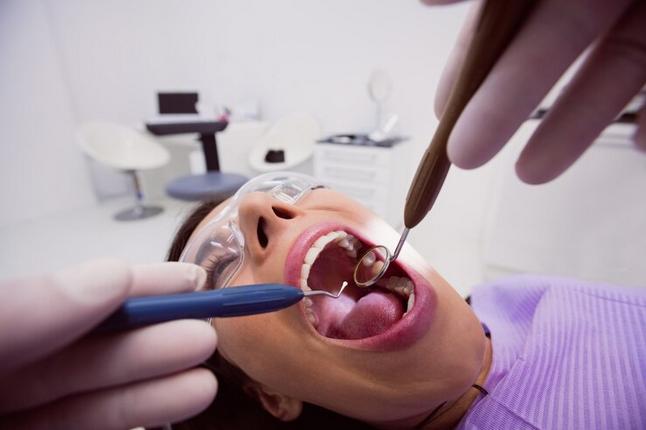The removal of wisdom teeth, also known as third molars, is a common dental procedure that many people undergo in their late teens or early twenties. Wisdom teeth can often cause problems because they might not have enough room to grow properly, leading to pain, infection, or other dental issues. With advances in dental technology and techniques, same-day extraction of wisdom teeth has become a more efficient and convenient option for patients.
Understanding Wisdom Teeth
Wisdom teeth are the last set of molars to develop in the mouth, usually emerging between the ages of 17 and 25. While some people have no issues with their wisdom teeth, others may experience complications. Common problems include impaction, where the tooth is trapped beneath the gum and cannot fully emerge, leading to pain and potential infection. Wisdom teeth can also grow at awkward angles, pressing against other teeth and causing crowding or damage. In some cases, cysts or tumors may form around impacted wisdom teeth, posing a risk to overall oral health.
The Need for Extraction
When wisdom teeth cause problems or have the potential to do so, dentists often recommend their removal. Extraction can prevent future dental issues, alleviate pain, and maintain the overall health of the mouth. While the thought of tooth extraction can be daunting, the process has become much more streamlined and less invasive thanks to modern dental practices.
Same-Day Extraction: A Convenient Solution
One of the significant advancements in dental care is the ability to perform same day wisdom tooth extraction.This approach offers numerous benefits, including reduced time off work or school, fewer appointments, and quicker relief from discomfort. The process typically begins with a thorough examination and imaging, such as X-rays or 3D scans, to assess the position and condition of the wisdom teeth.
Preparation and Planning
Before the extraction, the dentist will review the patient's medical history and discuss any concerns or questions. It is crucial to inform the dentist of any medications being taken or underlying health conditions. The dentist will also provide instructions on how to prepare for the procedure, which may include fasting if sedation is planned.
The Extraction Procedure
On the day of the extraction, the patient will be given anesthesia to ensure comfort during the procedure. Options for anesthesia include local anesthesia, which numbs the area around the wisdom teeth, or general anesthesia, which puts the patient to sleep. The choice of anesthesia depends on the complexity of the extraction and the patient's preference.
Once the anesthesia takes effect, the dentist will make an incision in the gum tissue to access the wisdom tooth. In some cases, the tooth may need to be divided into smaller pieces for easier removal. After the tooth is extracted, the dentist will clean the area and, if necessary, place stitches to promote healing. The entire procedure can take anywhere from 30 minutes to an hour, depending on the number of teeth being removed and their condition.
Post-Extraction Care
After the extraction, the patient will be monitored until the anesthesia wears off. It is normal to experience some swelling, bleeding, and discomfort following the procedure. The dentist will provide detailed instructions on how to care for the extraction site, including how to manage pain, reduce swelling, and prevent infection. Common recommendations include applying ice packs, taking prescribed pain medication, and eating soft foods for the first few days.
Recovery and Healing
The recovery period for wisdom teeth extraction varies from person to person, but most people can return to their normal activities within a few days. It is important to follow the dentist's post-operative care instructions closely to ensure proper healing. Avoiding smoking, drinking through a straw, and vigorous rinsing can help prevent complications such as dry socket, a painful condition that occurs when the blood clot at the extraction site is dislodged.
Benefits of Same-Day Extraction
The convenience of same-day wisdom teeth extraction cannot be overstated. Patients can address their dental issues promptly without the need for multiple appointments. This approach also minimizes the risk of complications that can arise from prolonged dental problems. Additionally, same-day extraction can lead to faster recovery times and less overall disruption to the patient's daily life.
Technological Advancements
The success of same-day wisdom teeth extraction is largely due to advancements in dental technology. High-resolution imaging, such as 3D scans, allows dentists to plan the extraction with precision, reducing the risk of complications. Modern surgical techniques and tools make the procedure less invasive and more efficient. Furthermore, the use of advanced anesthesia options ensures that patients remain comfortable throughout the process.
Patient Experience
Patients who undergo same-day wisdom teeth extraction often report a positive experience. The streamlined process, combined with effective pain management and personalized care, contributes to a smoother and more comfortable procedure. Many patients appreciate the ability to address their dental issues quickly and return to their normal routines with minimal downtime.
Conclusion
The removal of wisdom teeth has become a common and necessary procedure for many people. With the advent of same-day extraction, the process has been made more efficient, convenient, and comfortable for patients. Advances in dental technology and techniques have played a significant role in this development, allowing dentists to perform extractions with greater precision and less invasiveness. By understanding the need for extraction, preparing adequately, and following post-operative care instructions, patients can ensure a smooth recovery and maintain their overall oral health. Same-day wisdom teeth extraction offers a practical solution for those facing dental issues, providing prompt relief and enabling a quicker return to normal activities.





Comments